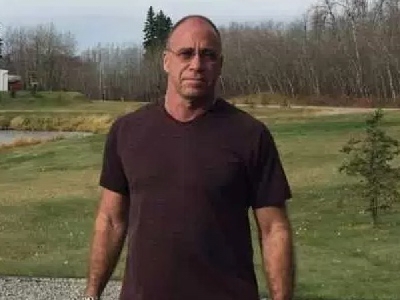
Posted on November 7, 2017
By Gordon Kent, Edmonton Journal
The owner of an Ardrossan company has developed technology that should speed the removal of toxic tailings ponds polluting defunct mine and industrial sites around the world.
Conventional dredging generally relies on people operating vessels that float on the surface and suck or dig up material from the bottom, but Canada Pump and Power’s underwater Mighty Dredge is pulled into place by winches and directed by computer, owner Jeremy Leonard said.
That cuts costs and means humans don’t have to run equipment in what can be dangerous conditions, he said.
“Our federal government is spending great deals of money just planning how to clean up leftover tailings ponds that are the result of mines and operations that have gone bankrupt,” he said.
“(They) left it to the government to worry about a pond filled with arsenic or a pond filled with other toxic waste that’s now leaching into the ground … There are ponds in the older parts of Eastern Europe that are actually contaminated with nuclear waste, and they’re not being cleaned up.”
Leonard, 57, has worked in the commercial diving and dredging field since the 1970s. One of his most exciting assignments was diving under the Beaufort Sea in the 1980s to help clear ice off drilling ships and guide them into a giant floating drydock.
He sold his first company, Northern Underwater Systems, in 2005. He has a home at Kailua-Kona on Hawaii’s Big Island and, not wanting to retire, formed a new company, Pacific Pump and Power.
In 2010, Leonard started Canada Pump and Power on his large rural property near Ardrossan, 40 km east of Edmonton, where a beautiful home with a window wall overlooks the head office, work space and a 3.6-hectare lake used to test equipment.
Most of the firm’s work is dredging and diving to maintain tailings ponds and facilities in northern Alberta’s oilsands, but the approximately 100 employees are also found in such places as Manitoba, Yukon and Brazil.
Caleb Dyck, Canada Pump’s research and development lead, recently returned from 2-1/2 months in the Northwest Territories working on pumps keeping water away from the Diavik diamond mine at Lac de Gras.
Dyck thinks their Mighty Dredge is the first fully automated machine of its type. With no operators, a smaller size and cheaper purchase price, he estimates running it will cost $300,000 for three months, compared to about $1 million for a large conventional dredge.
“As an Albertan, I think it’s going to make things significantly better … This technology can basically eliminate tailings.”
The federal government has preliminary approval to buy one of the $500,000 devices, which will be showcased and improved doing jobs next year in the Maritimes.
The goal is to sell about 50 of them annually. Leonard plans to expand Canada Pump’s Redwater plant, but says they might set up additional production facilities if the company grows as he anticipates.
Revenues doubled to $12 million in the company’s second year. They’ve now doubled again to $24 million, and Leonard hopes that figure will hit $50 million in another three years.
He’s developing an autonomous underground multi-pump system that automatically operates as needed to bypass sections of sewage or other pipelines being replaced or repaired.
Pumps are the world’s second-most commonly used electrical devices, after motors, so the market for such an innovation could be 1,000 times bigger than the Mighty Dredge, he said.
“I expect it will be (huge), because I have been in this business for a very, very long time … The future looks very bright.”
Source: Edmonton Journal





